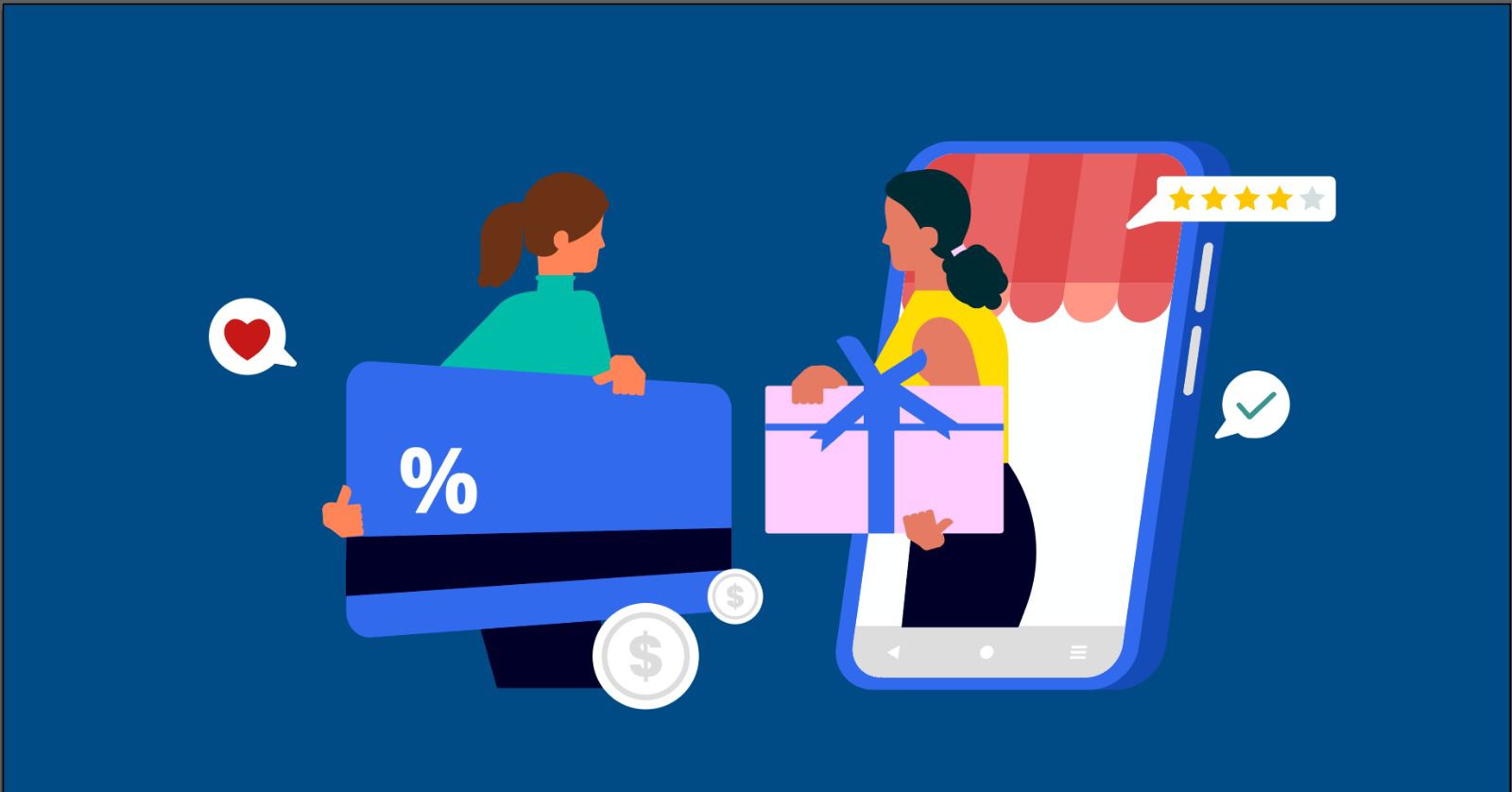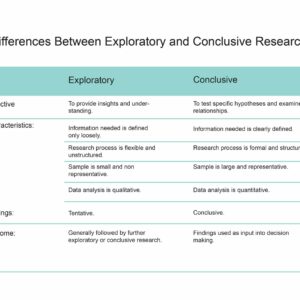
Brand positioning definition: Definition, Types and Benefits
Brand positioning definition: Definition, Types and Benefits SHARE THE ARTICLE ON Share on facebook Share on twitter Share on linkedin Table of Contents When you

Find the best survey software for you!
(Along with a checklist to compare platforms)
Take a peek at our powerful survey features to design surveys that scale discoveries.
Explore Voxco
Need to map Voxco’s features & offerings? We can help!
Find the best customer experience platform
Uncover customer pain points, analyze feedback and run successful CX programs with the best CX platform for your team.

We’ve been avid users of the Voxco platform now for over 20 years. It gives us the flexibility to routinely enhance our survey toolkit and provides our clients with a more robust dataset and story to tell their clients.
Steve Male
VP Innovation & Strategic Partnerships, The Logit Group
Explore Regional Offices

Find the best survey software for you!
(Along with a checklist to compare platforms)
Take a peek at our powerful survey features to design surveys that scale discoveries.
Explore Voxco
Need to map Voxco’s features & offerings? We can help!
Find the best customer experience platform
Uncover customer pain points, analyze feedback and run successful CX programs with the best CX platform for your team.

We’ve been avid users of the Voxco platform now for over 20 years. It gives us the flexibility to routinely enhance our survey toolkit and provides our clients with a more robust dataset and story to tell their clients.
Steve Male
VP Innovation & Strategic Partnerships, The Logit Group
Explore Regional Offices

Find the best survey software for you!
(Along with a checklist to compare platforms)
Take a peek at our powerful survey features to design surveys that scale discoveries.
Explore Voxco
Need to map Voxco’s features & offerings? We can help!
Find the best customer experience platform
Uncover customer pain points, analyze feedback and run successful CX programs with the best CX platform for your team.

We’ve been avid users of the Voxco platform now for over 20 years. It gives us the flexibility to routinely enhance our survey toolkit and provides our clients with a more robust dataset and story to tell their clients.
Steve Male
VP Innovation & Strategic Partnerships, The Logit Group
Explore Regional Offices
SHARE THE ARTICLE ON

Building customer loyalty is an integral part of any successful organization’s strategy. As customers today are presented with a myriad of options, retailers must go beyond simply offering quality products to stand out amongst their competition. This is where an effective retail loyalty program comes into play.
A well-designed retail loyalty program can be a powerful tool for nurturing customer relationships and fostering repeat business when utilized correctly. It gives retailers the opportunity to show their loyal customers that they are valued by providing them with personalized experiences, exclusive benefits, and incentives. However, building an effective retail loyalty program involves many key steps that require careful planning and execution.
In today’s blog, we will delve into the five key steps involved in building a successful retail loyalty program. From understanding your customers to defining program objectives to implementing your program seamlessly across touchpoints, we will explore the essential elements that contribute to an effective loyalty program.
Receive real-time insights that drive impact within your organization.
There are 5 key steps to building an effective retail loyalty program:
Let’s take a deeper dive into each step.
A crucial first step in creating an efficient and successful programme is outlining the goals of your retail loyalty programme. Retailers can develop a loyalty programme that not only cultivates consumer loyalty but also helps to the overall growth and success of the business by establishing clear goals and aligning them with the broader business objectives.
What you hope to accomplish with your loyalty programme should be made very clear. This can entail enhancing average order value, boosting customer retention, or growing market share. To track progress and assess the effectiveness of your programme, make sure your goals are clear and measurable.
Consider what your company’s main goals are and how the loyalty programme can help you achieve them. This alignment guarantees that the programme directly contributes to the expansion and success of your business. For instance, concentrate on creating a loyalty programme that promotes repeat purchases and long-term client relationships if your business goal is to build customer lifetime value.
Once the goals of your retail loyalty programme have been established, the next step is to create a programme that genuinely engages your target audience. An exciting loyalty programme cultivates a sense of loyalty and passion in both new and returning clients. To develop such a programme, you must prioritise selecting the appropriate incentives and rewards, developing a compelling value proposition, and include gamification components to boost participation.
1. Determine the right rewards and incentives:
Consider rewards and incentives that will appeal to your target demographic. This can vary depending on your industry and customer preferences. Discounts on future purchases, special access to brand-new goods or services, freebies or samples, and offers that are tailored to the tastes of the consumer are all examples of common rewards. It’s crucial to create a balance between profitable rewards and value for your company, making sure that the incentives offered are alluring enough to inspire customers without jeopardizing your revenue.
2. Craft a compelling value proposition for customers:
The distinctive value that your loyalty programme gives to customers should be made clear. What distinguishes it from your competition? Why should customers engage in your programme and take an active role in it?
3. Incorporate gamification elements to increase engagement:
Gamification can be an effective approach to increase customer satisfaction, and engagement in your loyalty programme. Establish challenges, quests, or levels within the program that customers can complete to obtain additional rewards or unlock exclusive benefits.Create leaderboards or social sharing tools that enable users to engage in friendly competition or to share their accomplishments with others in order to promote a sense of community.
Developing an effective retail loyalty program is an essential step towards stimulating customer loyalty and driving business growth. To ensure the success of your program, it is important to select the right platform for program management, integrating the loyalty program across multiple customer touchpoints, and developing a seamless enrollment process for customers.
1. Choosing the right technology platform for program management:
Choose a platform that is reliable and scalable and can efficiently handle and track your loyalty programme. It’s also crucial to decide if you want to create a personalised loyalty management system from scratch or use a third-party loyalty platform that is tailored to your particular requirements.
2. Integrating the loyalty program across multiple customer touchpoints:
Achieve seamless integration of your rewards programme across all customer touchpoints, including your website, mobile app, physical stores, and social media platforms.
3. Developing a seamless enrollment process for customers:
Provide several enrollment alternatives (such as online registration and in-store sign-ups) and reduce the quantity of information needed to register to make it simple for customers to sign up for your loyalty programme.
For customers that sign up for the loyalty programme, think about providing incentives like welcome rewards to foster an immediate sense of value and encourage involvement.
A retail loyalty program’s design and implementation are only the beginning of its creation. To make sure that your programme reaches and resonates with your target audience, it also takes a carefully developed communication and promotion strategy. You may increase consumer engagement and encourage programme participation by clearly explaining the benefits of your loyalty programme, use a variety of marketing channels, and offering regular updates and special deals.
1. Creating a communication strategy to promote the loyalty program:
Create a thorough communication strategy that explains how you’ll introduce and advertise your loyalty programme to your target market.The program’s advantages, awards, and special value proposition should be made clear. Be sure to emphasise how the programme addresses particular needs or problems.
Focus on the awards and benefits that are most pertinent to each group of your consumer base based on their preferences and purchasing patterns.
2. Leveraging various marketing channels to reach and engage customers:
To achieve the greatest possible reach and engagement, utilise a variety of marketing channels (such as social media, email marketing, in-store signage, and website banners).
Use signage, point-of-sale displays, staff training, and other program-related messages in your physical stores to aggressively promote the rewards of the loyalty programme to customers during their in-store experience.
3. Providing ongoing updates and exclusive offers to program members:
Keep your program members engaged by providing regular updates and exclusive offers that reward their loyalty. You can also implement a tiered or VIP system within your loyalty program to offer additional perks and exclusive benefits to top-tier members, encouraging them to strive for higher program engagement and rewards.
Your retail loyalty program’s performance needs to be tracked and assessed in order to be effective and to help you make decisions.
Establish KPIs that are in line with your goals in order to evaluate the effectiveness of your loyalty programme. These can include the percentage of repeat customers, average order value, customer satisfaction rating, and client retention rate. You may evaluate the effectiveness of the programme and spot areas for development by keeping an eye on these measures.
To evaluate changes’ effects and identify areas for improvement, it is imperative to conduct regular programme reviews. Utilise client feedback, survey results, and data analytics insights to pinpoint problem areas and potential improvements. Make the required changes to the programme to improve performance.
Building a successful retail loyalty program demands precise goals, engaging design, seamless implementation, effective communication, and data-driven optimization. You can build client loyalty, generate business growth, and ultimately thrive in the cutthroat retail environment by concentrating on these five essential elements and consistently improving your programme. So begin developing your loyalty programme and keep in mind to stay focused on your clients, flexible, and determined to provide value to your devoted followers.

Brand positioning definition: Definition, Types and Benefits SHARE THE ARTICLE ON Share on facebook Share on twitter Share on linkedin Table of Contents When you
How To Find Sampling Error SHARE THE ARTICLE ON Share on facebook Share on twitter Share on linkedin Table of Contents A sample population is

Navigating the Depths: Exploratory Research vs Explanatory Research SHARE THE ARTICLE ON Table of Contents In the dynamic landscape of research methodologies, two distinct approaches
Customer 360 view dashboard SHARE THE ARTICLE ON Table of Contents What is a customer 360-degree view dashboard? Customer 360 view has worked wonders on

Work Life Balance Questionnaire: Understanding Workplace Dynamics SHARE THE ARTICLE ON Table of Contents A bustling workplace with a requesting responsibility can frequently prompt unfortunate

All you need to know about Panel Surveys SHARE THE ARTICLE ON Table of Contents What is a panel survey? A panel survey can be
We use cookies in our website to give you the best browsing experience and to tailor advertising. By continuing to use our website, you give us consent to the use of cookies. Read More
| Name | Domain | Purpose | Expiry | Type |
|---|---|---|---|---|
| hubspotutk | www.voxco.com | HubSpot functional cookie. | 1 year | HTTP |
| lhc_dir_locale | amplifyreach.com | --- | 52 years | --- |
| lhc_dirclass | amplifyreach.com | --- | 52 years | --- |
| Name | Domain | Purpose | Expiry | Type |
|---|---|---|---|---|
| _fbp | www.voxco.com | Facebook Pixel advertising first-party cookie | 3 months | HTTP |
| __hstc | www.voxco.com | Hubspot marketing platform cookie. | 1 year | HTTP |
| __hssrc | www.voxco.com | Hubspot marketing platform cookie. | 52 years | HTTP |
| __hssc | www.voxco.com | Hubspot marketing platform cookie. | Session | HTTP |
| Name | Domain | Purpose | Expiry | Type |
|---|---|---|---|---|
| _gid | www.voxco.com | Google Universal Analytics short-time unique user tracking identifier. | 1 days | HTTP |
| MUID | bing.com | Microsoft User Identifier tracking cookie used by Bing Ads. | 1 year | HTTP |
| MR | bat.bing.com | Microsoft User Identifier tracking cookie used by Bing Ads. | 7 days | HTTP |
| IDE | doubleclick.net | Google advertising cookie used for user tracking and ad targeting purposes. | 2 years | HTTP |
| _vwo_uuid_v2 | www.voxco.com | Generic Visual Website Optimizer (VWO) user tracking cookie. | 1 year | HTTP |
| _vis_opt_s | www.voxco.com | Generic Visual Website Optimizer (VWO) user tracking cookie that detects if the user is new or returning to a particular campaign. | 3 months | HTTP |
| _vis_opt_test_cookie | www.voxco.com | A session (temporary) cookie used by Generic Visual Website Optimizer (VWO) to detect if the cookies are enabled on the browser of the user or not. | 52 years | HTTP |
| _ga | www.voxco.com | Google Universal Analytics long-time unique user tracking identifier. | 2 years | HTTP |
| _uetsid | www.voxco.com | Microsoft Bing Ads Universal Event Tracking (UET) tracking cookie. | 1 days | HTTP |
| vuid | vimeo.com | Vimeo tracking cookie | 2 years | HTTP |
| Name | Domain | Purpose | Expiry | Type |
|---|---|---|---|---|
| __cf_bm | hubspot.com | Generic CloudFlare functional cookie. | Session | HTTP |
| Name | Domain | Purpose | Expiry | Type |
|---|---|---|---|---|
| _gcl_au | www.voxco.com | --- | 3 months | --- |
| _gat_gtag_UA_3262734_1 | www.voxco.com | --- | Session | --- |
| _clck | www.voxco.com | --- | 1 year | --- |
| _ga_HNFQQ528PZ | www.voxco.com | --- | 2 years | --- |
| _clsk | www.voxco.com | --- | 1 days | --- |
| visitor_id18452 | pardot.com | --- | 10 years | --- |
| visitor_id18452-hash | pardot.com | --- | 10 years | --- |
| lpv18452 | pi.pardot.com | --- | Session | --- |
| lhc_per | www.voxco.com | --- | 6 months | --- |
| _uetvid | www.voxco.com | --- | 1 year | --- |